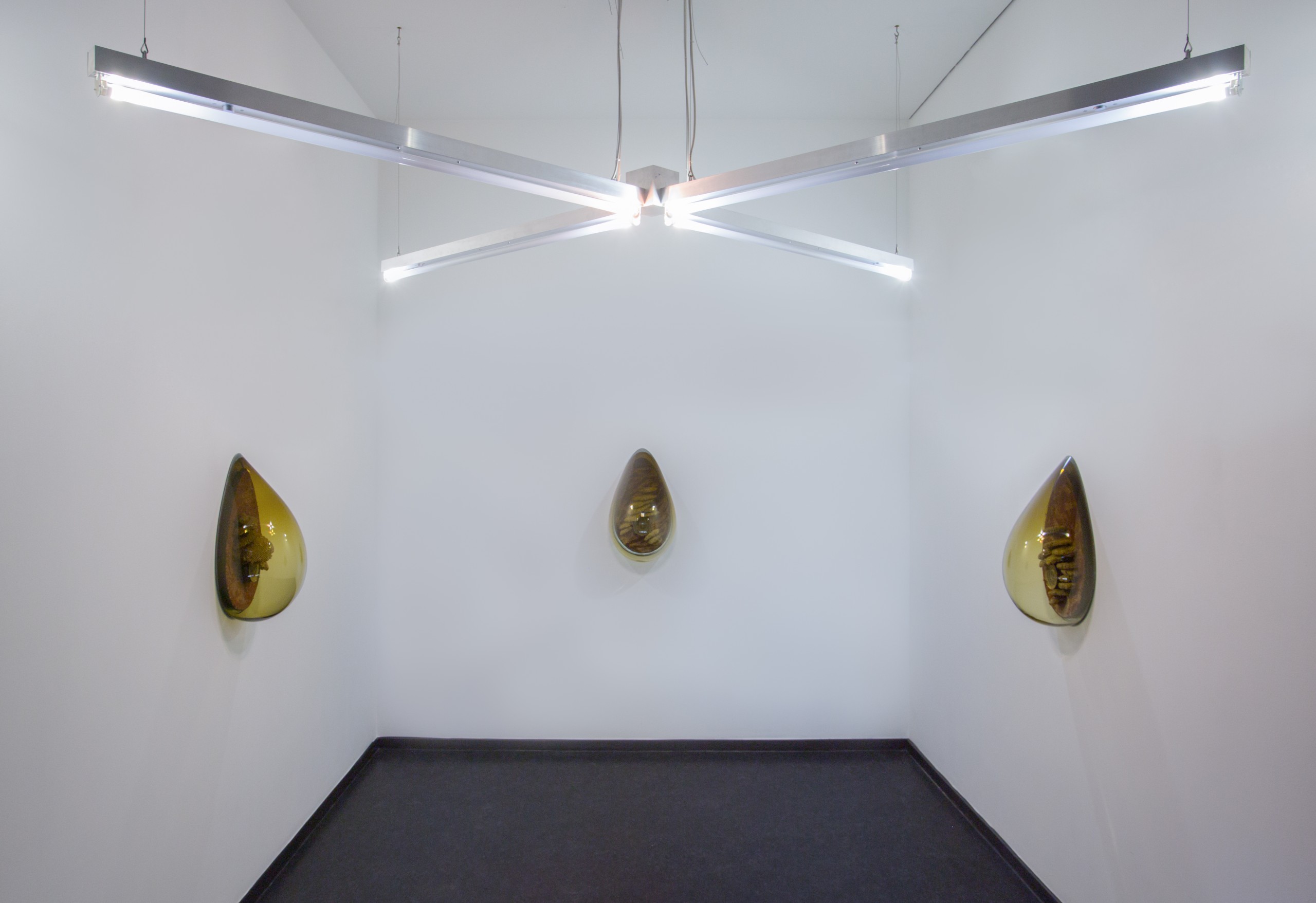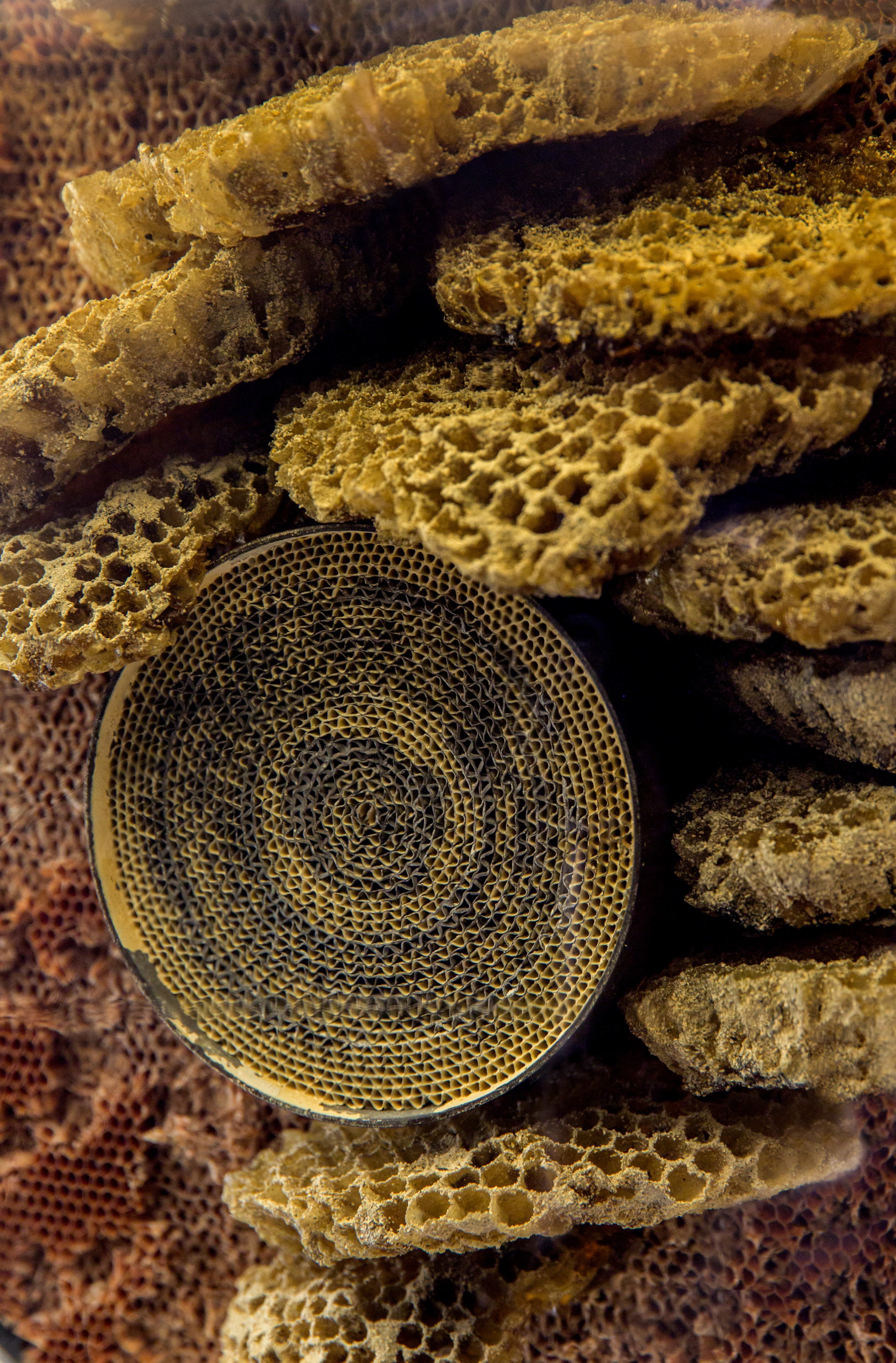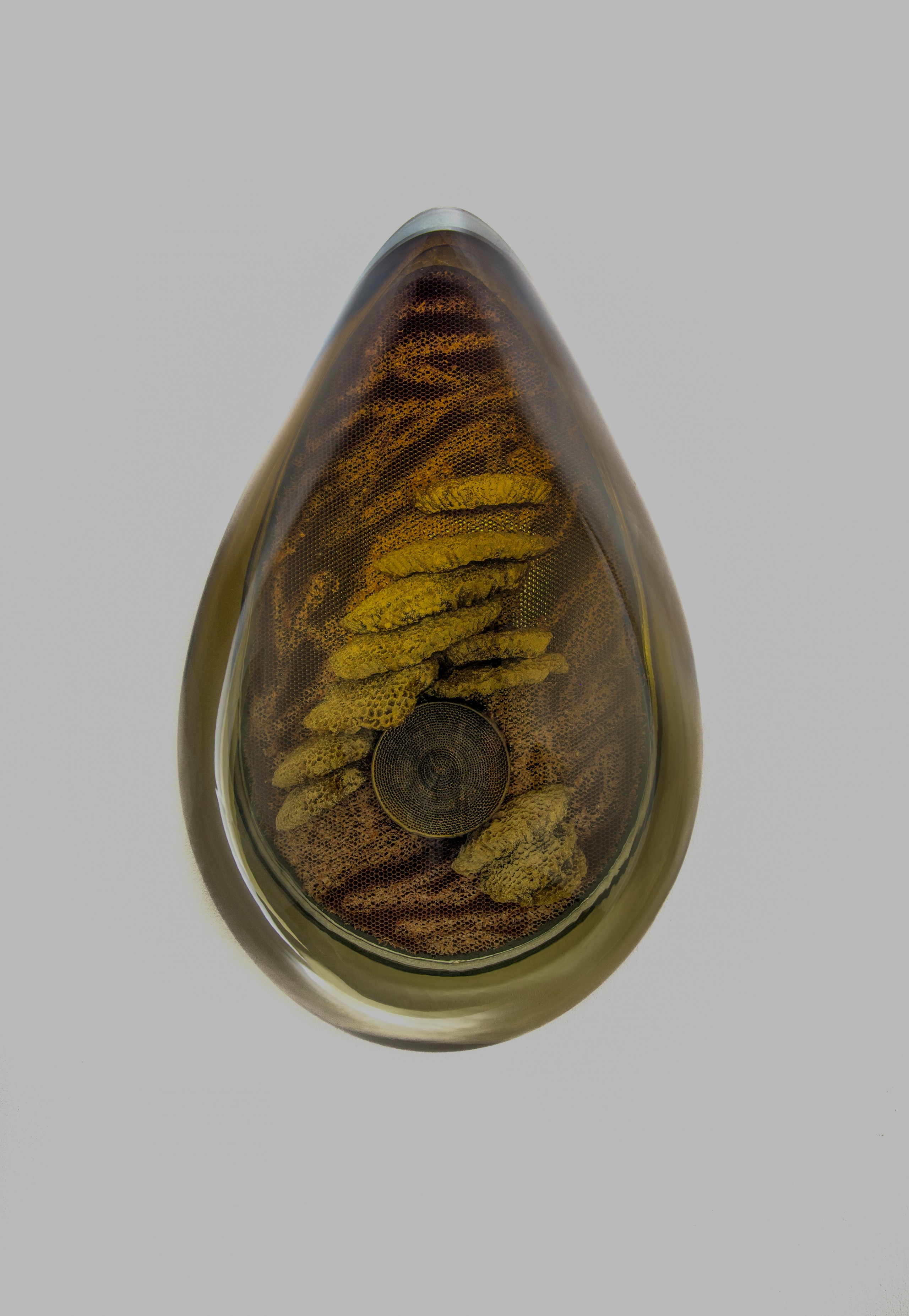Staatliche Kunsthalle
Baden-Baden
Cooper Jacoby
Matte Wetter
Sep 03, 2016
Oct 09, 2015

The “Microbial Home” by the company Phillips, a so-called “do- mestic ecosystem” which consists of a kitchen, refrigeration, waste disposal, etc. One component in this model home is a colored glass beehive for urban beekeeping. Bees are supposed to fly through a hole in a condo’s window into the hive’s glass dome on the other side, where the apartment inhabitants then watch the colony produce honey and wax in their living space, later harvesting it for themselves.
The hive as a corroding, motor system, rather than a healthy, living one…. with malfunctioned, exhausted materials seeping into or remolding the original, passing as eco and symbiotic.
An appliance re-engineered as an exquisite corpse…nature’s “perfect, lightweight engineering,” honeycomb’s hexagonal cell structure…rubbed raw in each damaged, after-market, and insectile iteration.
Colliding orbits of waste parts: sections from a dead wasp hive recast in plastic, encrusted with the carbon monoxide-trapping, rare-earth coating of a scrap catalytic converter.
Burnt out components strain to regulate and convert their flows.
In the hives, the failure occurs in the output: the catalytic cores leak the coating which limits exhaust. With the lights, the problem comes from their input: they flicker because their fixtures are fed the wrong current. New bulbs are choked so they can’t fully ignite and dead bulbs are overheated so the remaining mercury vapor trapped inside glows like a candle. This inability to reach a homeo- stasis suspends the hardware in a sort of purgatorial stutter with new parts rapidly burning out and bulbs at the end of their life being dimly resurrected…live systems in zombie-states, materials running in their afterlives.



